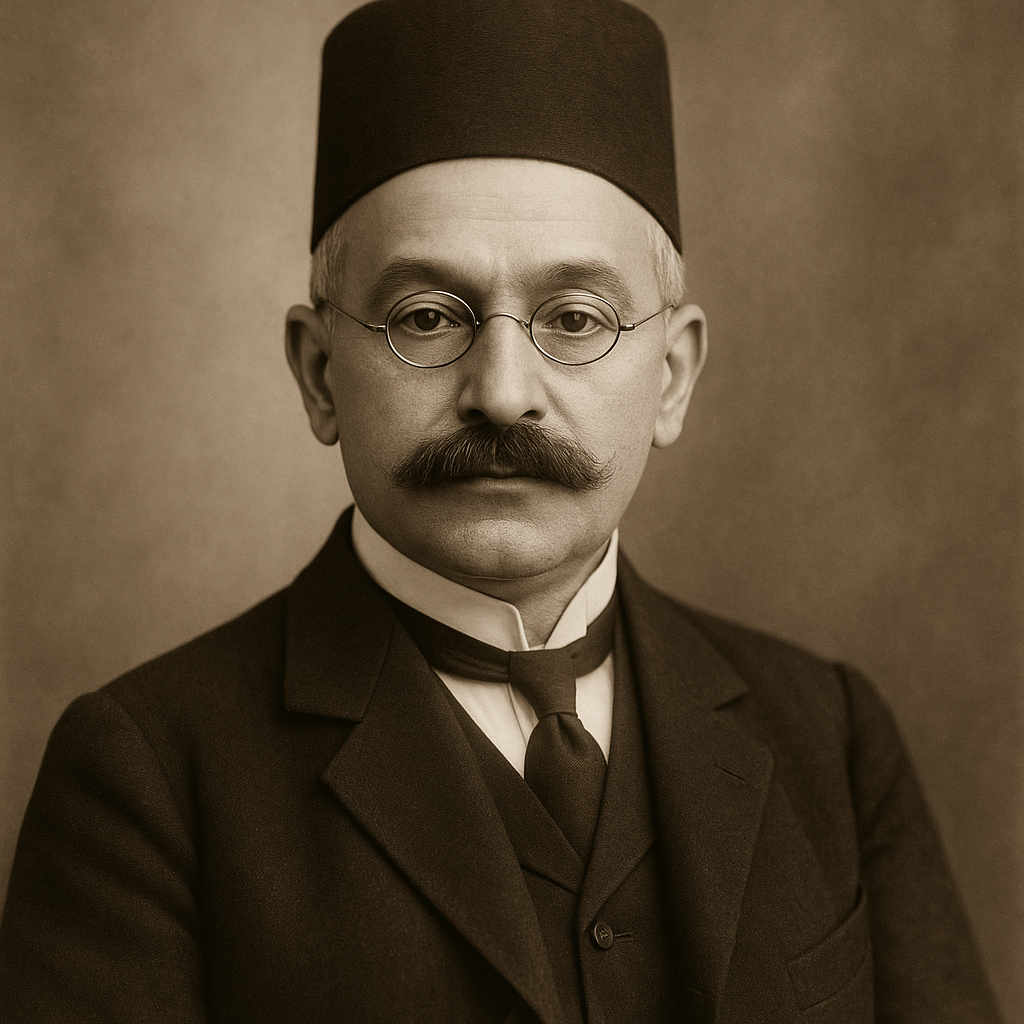
Gerji Albittar – The Founder of Damascene Mosaic: The Man Who Turned Wood into Art
Share
Told by Yazan Krayem – Founder of Damascus Box
In the narrow lanes of old Damascus, where sunlight filters through ancient arches and the scent of wood fills the air, one man’s vision transformed a simple craft into one of Syria’s most celebrated art forms. His name was Gerji Albittar — the pioneer who gave life to Damascene mosaic, or al-Mouzaïek al-Dimashqi (الموزاييك الدمشقي), more than a century ago.
The Birth of a Craft
Born in 1840 in the Al-Hara Al-Jawaniyya quarter of Bab Touma, Gerji came from a family of veterinarians — yet his heart followed a different path. Drawn to the world of carpentry, he spent his youth wandering through the workshops of Damascus, fascinated by the harmony of shapes, textures, and light in the city’s wooden furniture.
At a time when universities were not a common choice, crafts were the soul of Damascus, passed from master to apprentice, father to son. Gerji’s gift was more than technical skill — it was imagination. One day, after seeing the dried trunk of a lemon tree in a Franciscan courtyard, he envisioned how geometry, light, and natural wood tones could come together to form living poetry.
This was the moment Damascene mosaic was born.
Turning Wood into Art
Gerji began experimenting with inlay techniques, embedding threads of bone, mother-of-pearl, and ivory into dark walnut wood. He invented what became known as the Damascene “mouzaïek” style — delicate, geometric, and precise.
He established his first workshop around 1860, crafting extraordinary pieces of furniture that adorned homes, palaces, and churches throughout Damascus. His art quickly captured attention beyond Syria’s borders, celebrated for its blend of geometry, light, and meaning.
“He turned still wood into living art,” wrote one contemporary admirer — “a symphony of color and patience that spoke of Damascus itself.”
Each creation reflected not only craftsmanship but also devotion: Gerji was known for his humility, faith, and generosity, dedicating much of his success to charitable work.
Recognition Across the World
By the late 19th century, Gerji Albittar’s name had become synonymous with Damascene art. He exhibited his works in Vienna in 1891 and Paris in 1892, where his wooden masterpieces, inlaid with mother-of-pearl and fine patterns, represented the elegance of Syrian craftsmanship.
In 1895, at the request of the Ottoman governor of Damascus, Gerji prepared a collection of exquisite furniture as a gift for Sultan Abdul Hamid II, earning the Order of the Medjidie and international praise for his innovation.
He also presented magnificent works to the Vatican and later to the United Nations, where legend says an important resolution was once signed on a table made by his hands — a poetic symbol of peace from Damascus to the world.
The Legacy of a Master
Gerji Albittar never patented his invention. Out of humility and love for his city, he allowed the craft to spread freely, creating work and dignity for generations of artisans. By the early 20th century, hundreds of workshops flourished across Damascus, each tracing its lineage back to his workshop.
Among his apprentices were names that would carry the art forward — Elias Estfan, Anton Beit, Michel Chniara, and many others who turned his craft into a thriving Damascene tradition.
Through them, the mosaic of Damascus became not just furniture, but an identity — a symbol of beauty, precision, and soul.
An Eternal Signature
Gerji Albittar passed away in 1935, leaving behind not only masterpieces of wood and mother-of-pearl but also a living legacy. His art remains in homes, churches, and museums — glowing softly, telling the story of a man who saw divine harmony in geometry.
“Every true mosaic piece carries his touch,” say the artisans of Damascus even today. “He gave the craft its spirit — and the city its wooden poetry.”
Written by Yazan Krayem
At Damascus Box, we proudly honor the legacy of Gerji Albittar, the father of Damascene mosaic, and the generations of craftsmen who continue his journey.
Through their hands, this Syrian art form lives on — piece by piece, a bridge between past and future.
